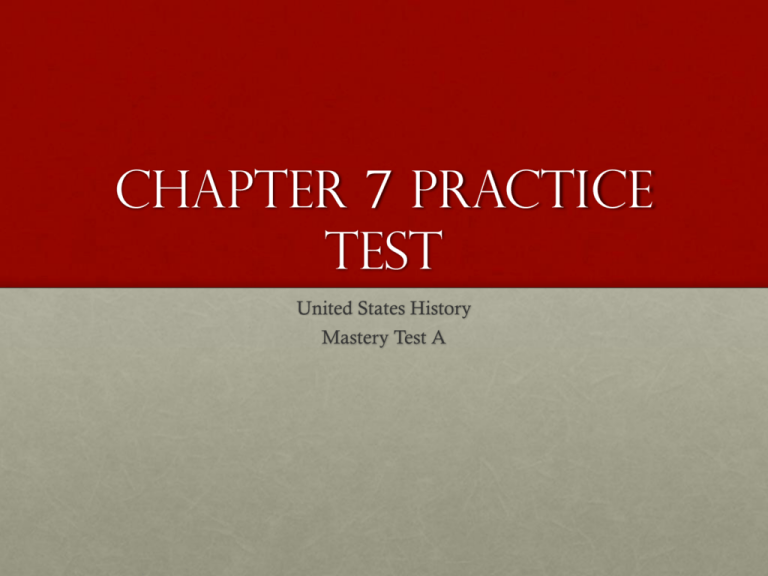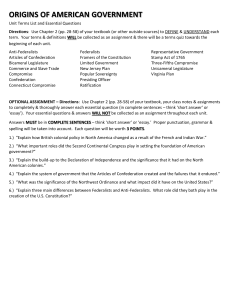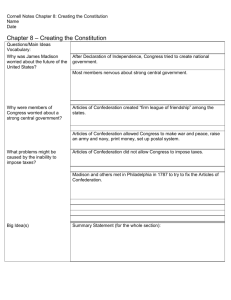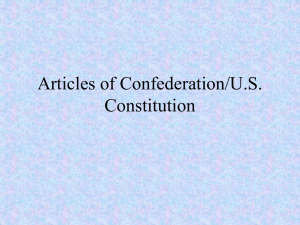Chapter 7 Practice Test
advertisement

Chapter 7 Practice Test United States History Mastery Test A Part a 1) All (nine, thirteen, twenty) states had to agree on a proposed change in the Articles of Confederation. 2) The paper money that each state printed was worthless without (gold, Congress, tariffs) to back it. 3) Tariffs that individual states placed on goods discouraged (international, interstate, national) trade. 4) The Constitutional Convention was held to create a stronger, more forceful (Congress, dispute, government). 5) The “Great Compromise” was a plan accepted at the Constitutional Convention to have a (executive, judicial, legislative) branch of government made up of two houses. 6) The Compromise Committee recommended not to allow (duties, runaways, exports) between states. 7) The proposed purpose of the judicial branch of the government was to (enforce, interpret, make) the laws. 8) The purpose of the Bill of Rights was to provide for personal (freedoms, lawsuits, ownership). 1. Thirteen 2. Gold 3. Interstate 4. Government 5. Legislative 6. Duties 7. Interpret 8. Freedoms Part b 1) The government was strong and effective under the Articles of Confederation. 2) No matter how large its population, each state had only one vote in Congress under the Articles of Confederation. 3) Congress had power to create and collect taxes under the Articles of Confederation. 4) Under the Articles of Confederation, the central government could not settle disputes among states. 5) The Three-Fifths Compromise permitted three out of every five enslaved persons to be included in the population and taxation count of southern states. 6) Congress was allowed to affect the slave market before 1800. 7) The Compromise Committee recommended that Congress regulate interstate and international trade. 8) Compromises permitted tariffs on imports but not on exports. 1. False 2. True 3. False 4. True 5. True 6. False 7. True 8. True Part c 1. “Small-state plan” NJ 2. Presented by Edmund Randolph V 3. “Large-state plan” V 4. Presented by William Paterson NJ 5. Strong central government V 6. Greater control by larger states V 7. Like existing government NJ 8. Three branches of government V 9. Each state would have equal vote NJ 10. States would have more control NJ Part D 1. The anti-federalists feared the central government would have too much power under the Constitution. 2. The Anti-Federalists thought the Constitution did not protect personal freedoms. 3. Once the Constitution was ratified, it became the supreme law of the land. 4. Nine of the thirteen states had to approve the Constitution. 5. The Federalists Papers were essays written to explain the Constitution. 6. George Washington was elected the first President by unanimous consent. 7. The Bill of Rights are the first ten amendments to the Constitution. 8. The First Amendment grants freedom of religion, expression, and assembly. 9. The Sixth Amendment provides the right to a fair trial.







